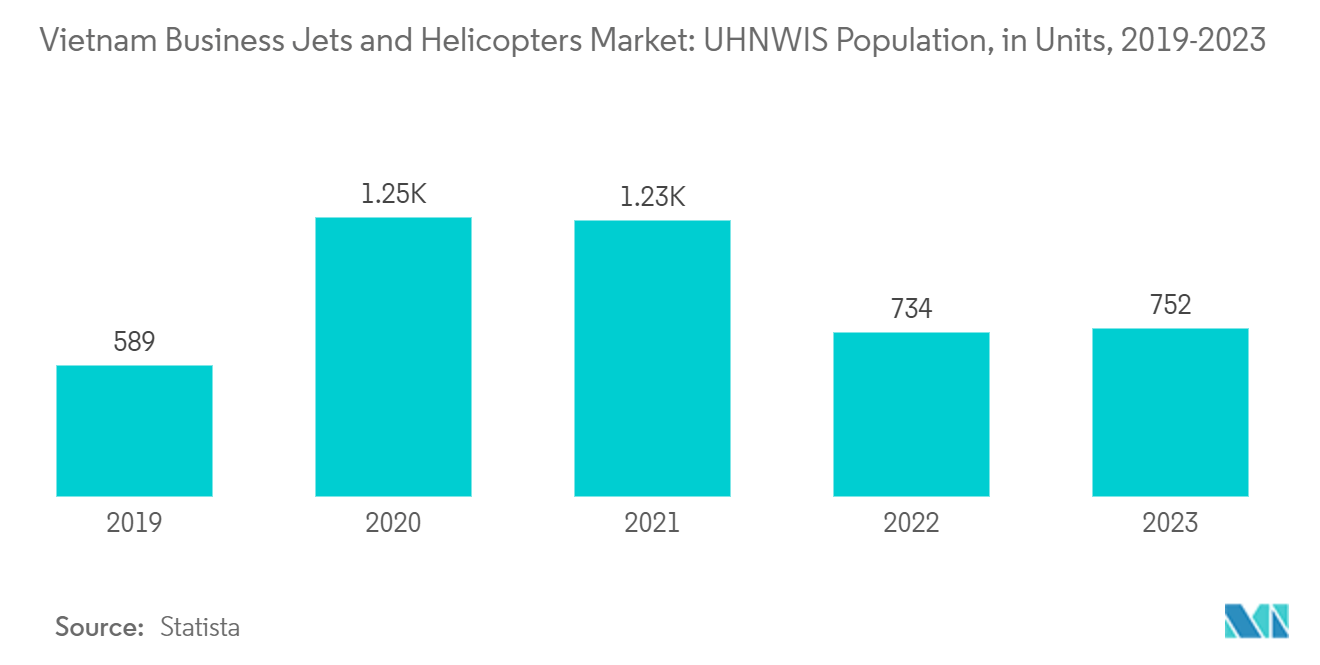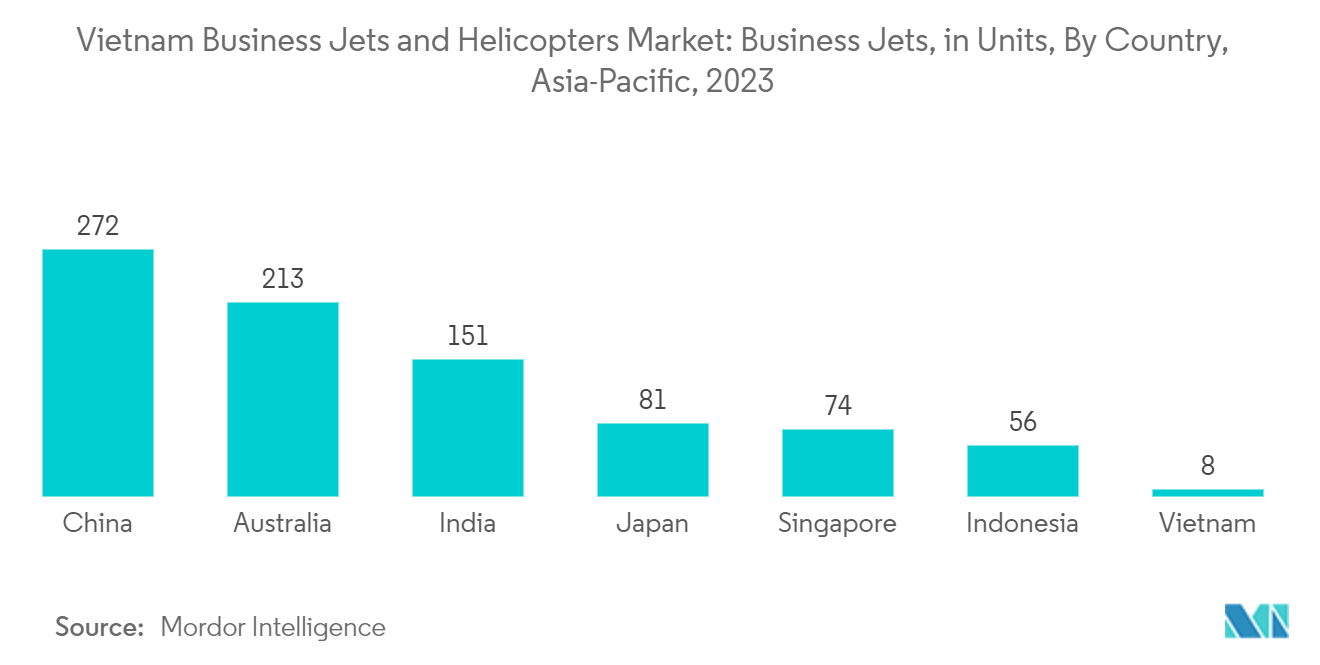Market Trends of Vietnam Business Jets And Helicopters Industry
Increasing Number of UHNWIs Driving the Demand for Business Jets
Individuals with liquid financial assets over USD 1 million are termed HNWIs, and those with a net worth of at least USD 30 million are termed UHNWIs. The market's growth is driven by the increasing demand for advanced business aircraft among millionaires and a thriving aviation sector. Vietnam’s economy has rapidly risen, translating into higher incomes. As the World Bank notes, there was a 170% increase in the ultra-wealthy population, which is expected to reach 540 individuals by the next decade. It has one of the highest growth rates globally. As Vietnam becomes the focal point for international businesses, private jets are critical in facilitating smooth and efficient travel. For instance, Tan Son Nhat Airport has a private and exclusive terminal to cater to the increased demand for global business leaders.
In 2023, Vietnam was expected to lead the world’s fastest-recovering domestic aviation sector and be the fifth fastest-growing aviation market. According to the International Air Transport Association, the number of air passengers is expected to reach 150 million by 2035. Thus, the increasing number of HNWIs and the developing economy have been the main drivers for purchasing business jets across the country.

The Business Jets Segment is Expected to Dominate the Market During the Forecast Period
The light business jet segment in Vietnam is an emerging sector with significant potential for growth. The demand for these jets is primarily driven by the country's economic expansion, increasing wealth, and the growing need for quick and efficient travel among the business community. Light business jets are favored for their cost-effectiveness, smaller size, and ability to operate in airports with shorter runways, which are common in Vietnam. In Vietnam, the demand for light business jets is driven by HNWIs and corporate executives who procure or rent them for travel. These jets are typically utilized for their convenience, flexibility, and efficiency, offering a premium travel experience that aligns with the needs of time-sensitive travelers.
Furthermore, large jets are also in high demand due to the high demand for corporate travel, tourism, and personal and leisure travel. This segment includes heavy jets, ultra-long-range, and executive liners/big liners with large cabins that accommodate ten or more passengers. These jets have a flying capacity of up to nine hours nonstop and a range of above 6,000 miles. Thus, increasing demand for business jets for business travel and rising spending on luxury travel are expected to drive the growth of the segment during the forecast period.



